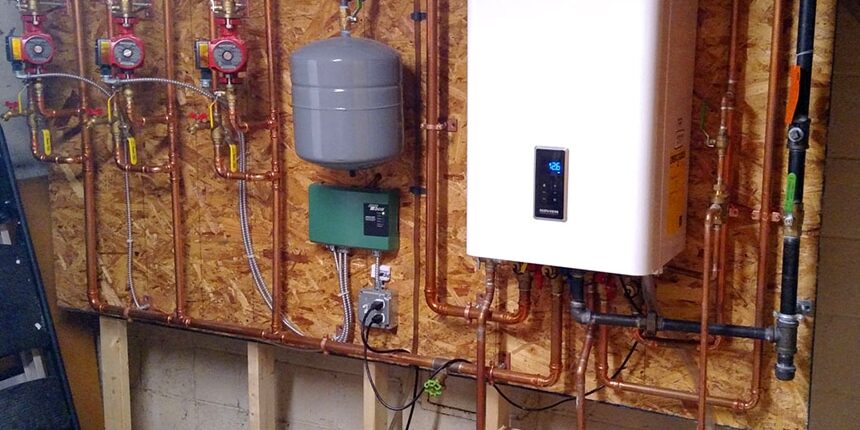Home heating systems are designed to increase the temperature inside a house, and they work by tapping thermal energy from a fuel source and transferring it to living spaces maintaining a comfortable ambient temperature. There are several types of systems used to provide heat in residential homes, and each broad type has more specific variations. Some HVAC systems share components with the home’s cooling equipment, some work independently, and some provide both heating and cooling.
1. In-Floor Radiant
Radiant systems provide even heat throughout the house. Most in-floor radiant systems use plastic water tubing inside concrete slab floors or attached to the bottom of wood floors. They are very quiet compared to other home heating systems. There are also in-floor radiant heating systems that use electrical wiring to work with ceramic or stone tile materials.
While they are slow to heat up and adjust to temperature changes, in-floor radiant systems are energy efficient and provide heated comfort to every inch of the house.
2. Portable heaters
Portable heaters may be an affordable solution if your main heating system doesn’t work well or is too expensive to run. They can be particularly cost-effective if you only need to heat one room. Some portable heaters work by convection, which circulates the air in a room. Others may use radiant heating—an option that sends heat into its direct line of sight.
3. Water Baseboard Radiator
Another more modern form of radiant heat is a hot water baseboard system, also known as a hydronic system. These systems also use a centralized boiler to heat water that circulates through a system of water pipes to low-profile baseboard heating units that radiate the heat from the water out into the room via thin metal fins surrounding the water pipe. This is essentially just an updated, evolved version of the old upright radiator systems.



